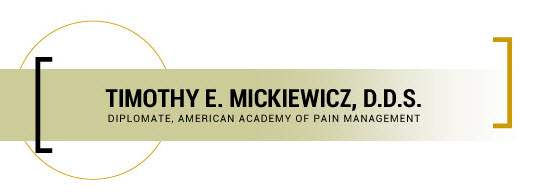
If you pay any attention to modern orthodontic treatments, you’ve probably noticed the prevalence of orthodontic accelerators, such as AcceleDent. Maybe you’ve seen ads for accelerated orthodontics, as well. The whole concept of orthodontic treatment is based on the premise that you can encourage teeth to move by asserting gentle constant pressure over time. Go too fast, and you might damage the teeth or pull them from their supporting bone structure. Go too slow and you won’t see any change. Since the timeline for braces has remained at about two years for decades—how, you might ask, can we change the timeline now?
Several years ago, a doctor named Jeremy Mao theorized that applying low-level vibrating force to the teeth might encourage faster (safe) movement of the teeth. Dr. Mao was a DDS with an orthodontic specialty, as well as a PhD in multidisciplinary engineering. There was literature that indicated long-bone density could be improved with vibration, so he explored the idea in a series of animal models that paralleled the way bones act in the human mouth during orthodontic treatments. Vibration therapy is an accepted treatment for osteoporosis and other situations that require stimulating bone growth—why not in the mouth, as well? At the same time, a Japanese laboratory was testing vibration therapy for tooth movement in rats (imagine that study!) and found positive results. As a result, Dr. Mao’s theories led to the first orthodontic accelerators being made.
How Accelerators Work
Devices like AcceleDent Optima, which I provide for my patients, incidentally, provide gentle vibrations to the teeth for a period of about 20 minutes per day. This improves the rate of bone remodeling that is needed for safe, effective movement of the teeth. It is about the same size as a dental retainer, and can be worn and operated hands-free. The amount of vibration is actually very minor, as compared to normal chewing, so it doesn’t cause any harm to the teeth. What is does do, so the theory goes, is increase the rate of healing and repair that bones would naturally do on their own.
Do Accelerators Really Work?
There are skeptics of this treatment, of course, since it’s very hard to prove “faster” when individual rates of response may vary. Every patient’s mouth is different, and it’s not as though you can compare normal orthodontic treatment with accelerator-assisted orthodontic treatment in the same patient! Once the teeth have moved, they have moved. You can’t go back and see if they’ll move faster or slower once the results have been achieved. It’s also hard to compare pain levels among different patients.
Essentially, there have been enough studies conducted to convince the FDA that AcceleDent is safe and effective treatment for orthodontic patients. Visit AcceleDent’s website to read more about the studies, as they claim it speeds up treatment and reduces pain up to 71 percent. Personally, my patients are often in a hurry to complete their treatments, and are willing to try anything if it may reduce pain and treatment timelines.
Should I Use AcceleDent?
If you are considering using an orthodontic accelerator, I recommend you do your own research and see what other patients have to say. See how many orthodontists endorse the product. Read the opinions of doctors. Many innovative treatments have their naysayers, especially when evidence on human clinical trials is hard to get by empirical means. At the very least, we know it is safe, and will not cause harm to an otherwise healthy mouth.
About the Author: Dr. Mickiewicz owns a private practice in Sacramento and lectures across the nation on TMD treatments. He is a diplomate of the American Academy of Pain Management and holds membership in many professional associations for dentistry, sleep medicine, and TMD. In addition, Dr. Mick, as his patients call him, founded Pacific Orofacial Pain Consultants, a team of experts in various disciplines, who tackle the issue of TMD pain and treatment, to help sufferers find relief from chronic pain. To talk with Dr. Mick, call his Sacramento dental office at 916-469-9178.


